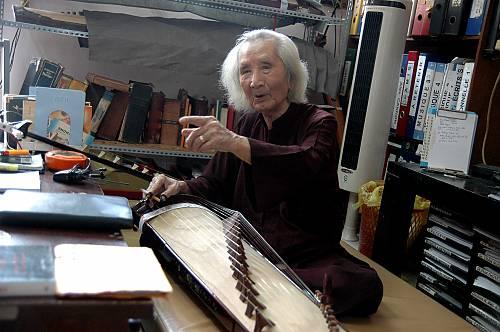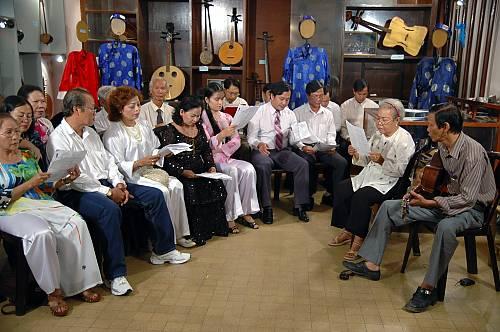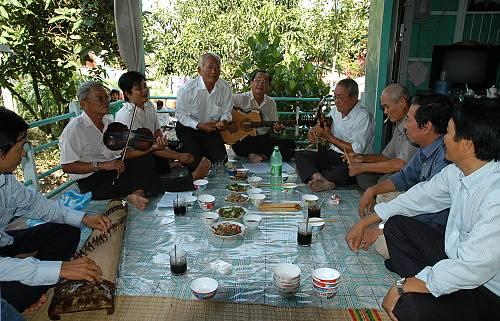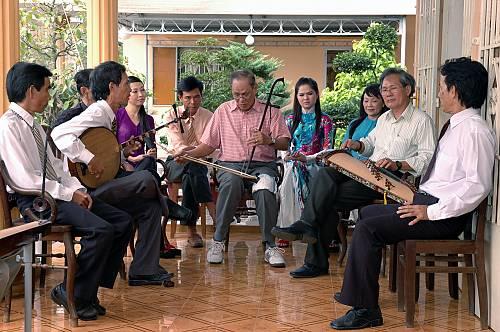Art of Đờn ca tài tử music and song in southern Viet Nam
© 2010 Vietnamese Institute for MusicologyA musical art with both scholarly and folk roots, Đờn ca tài tử is an indispensable part of the spiritual activity and cultural heritage of the people of southern Viet Nam. The music and songs evoke the people’s life and work on the land and rivers of the Mekong Delta region. Performed at numerous events such as festivals, death anniversary rituals and celebrations, Đờn ca tài tử is thus intimately connected with other cultural practices and customs, oral traditions and handicrafts. The performers express their feelings by improvising, ornamenting and varying the ‘skeletal melody’ and main rhythmic patterns of these pieces. Đờn ca tài tử is played on a variety of different instruments, including the moon-shaped lute, two-stringed fiddle, sixteen-stringed zither, pear-shaped lute, percussion, monochord and bamboo flute. Its repertoire is based on twenty principal songs and seventy-two classical songs. The musical art is passed on through oral transmission, based on imitation, from Read more about this element on the UNESCO Intangible Cultural Heritage website.










